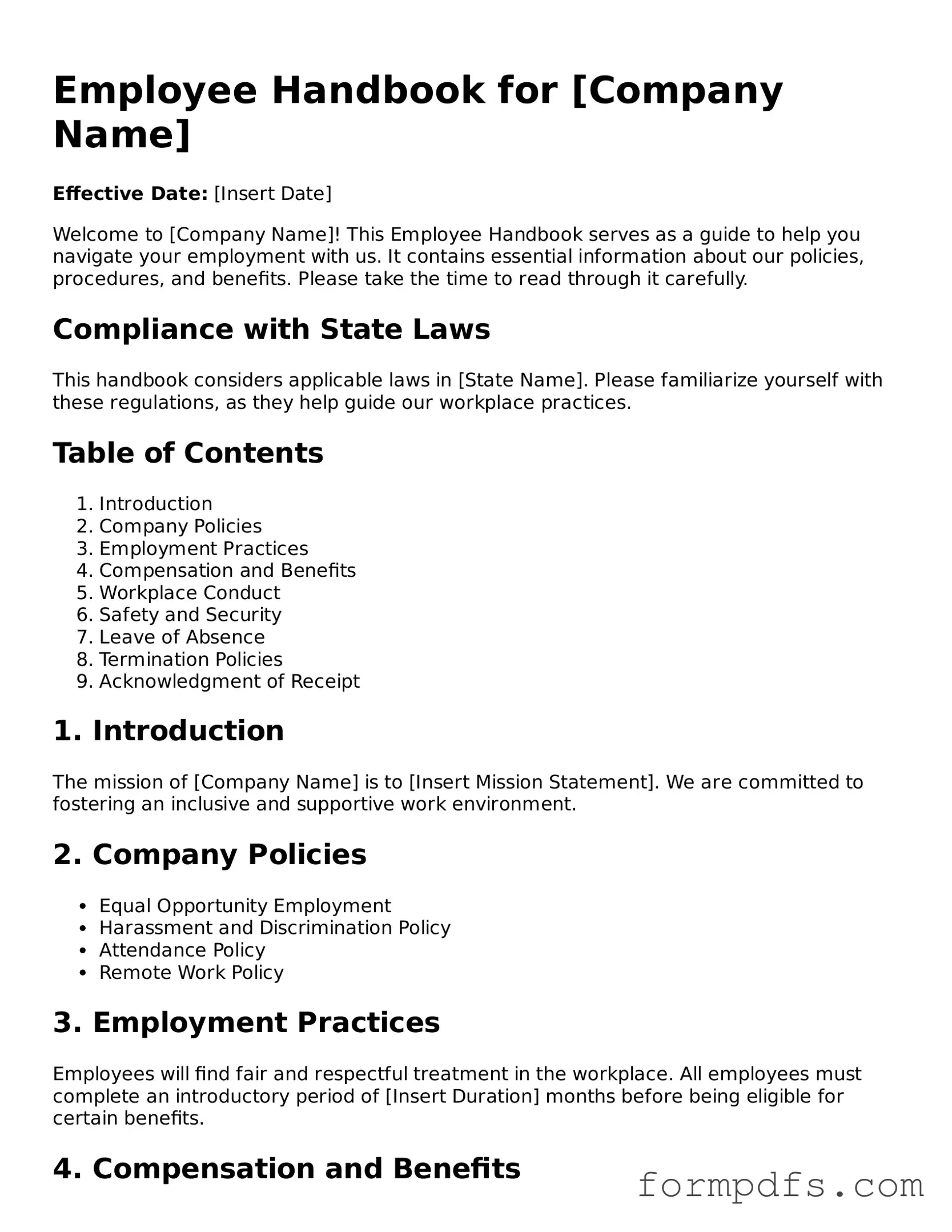What is the purpose of the Employee Handbook?
The Employee Handbook serves as a guide for employees, outlining company policies, procedures, and expectations. It helps ensure that everyone understands their rights and responsibilities within the workplace. By providing clear information, the handbook promotes a positive work environment and helps prevent misunderstandings.
Who should receive a copy of the Employee Handbook?
All employees should receive a copy of the Employee Handbook, regardless of their position or tenure. New hires typically receive it during orientation, while existing employees should be given updates whenever changes occur. This ensures that everyone is informed and on the same page regarding company policies.
How often is the Employee Handbook updated?
The Employee Handbook is reviewed and updated regularly, typically on an annual basis or whenever significant changes occur within the company or applicable laws. Keeping the handbook current is essential to reflect the latest policies and legal requirements, ensuring employees have access to the most relevant information.
What should I do if I have questions about the Employee Handbook?
If you have questions about the Employee Handbook, you should reach out to your supervisor or the Human Resources department. They can provide clarification on policies and procedures. It’s important to address any uncertainties to ensure you fully understand your rights and responsibilities.
Is the Employee Handbook legally binding?
The Employee Handbook is not typically considered a legally binding contract. However, it does outline company policies that employees are expected to follow. While it provides guidance, it is essential to understand that employment is usually at-will, meaning either the employee or employer can terminate the employment relationship at any time.
Can I suggest changes to the Employee Handbook?
Yes, employees are encouraged to provide feedback and suggest changes to the Employee Handbook. If you believe a policy should be updated or clarified, you can share your thoughts with your supervisor or Human Resources. Employee input is valuable in creating a fair and effective workplace.
